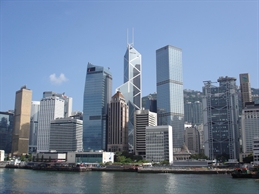
One of the big problems facing ports in China right now is that of congestion, which has led to a number of lines imposing congestion surcharges on customers.
Although Hong Kong, for example, has faced the problem of congestion for many years, it has recently been accentuated by an increase in barge traffic, which has placed a strain on facilities at Kwai Tsing.
The entire situation has become more complicated with the increase in transshipment volumes and the increase in deployment of larger container vessels, as well as the formation of new shipping alliances.
These factors are all exerting even greater pressure on terminal operators’ quayside capacity and yard density.
According to sources in Hong Kong, the industry sees the need for additional dedicated barge berths and back-up land to take away some of the pressure on the terminal operators, and there have been formal requests put in over the years calling for the government for years to take appropriate action.
In a recent joint announcement by the Hong Kong Container Terminal Operators Association (HKCTOA) and the Hong Kong Liner Shipping Association (HKLSA), there was a dedicated urgency placed on the government to expedite the implementation of land use rationalization at Kwai Tsing Container Port.
Tony Tong, vice-chairman of the HKLSA, said: “We need sufficient land and berthing facilities to allow for effective barge-vessel arrangements and smooth inter-terminal trucking flow to meet the vast number of cargo consolidation activities between shipping alliance carriers at the port. The absence of such a port zone land policy is one of the major reasons why port congestion continues to be a big challenge today.”
Along the same track, one of the container port’s terminal operators, Modern Terminals Ltd said: “The lack of dedicated barge berths to cater for the increase in barge volume has resulted in long waiting times.
“As these growth segments require more quayside capacity and longer storage durations within the yard, there has been increasing pressure on the port’s infrastructure and equipment.
“This pressure has been compounded by a dramatic increase in vessel sizes and the increasing complexity of shipping line alliances.”
It is generally accepted that while larger vessels are taking up more quay length and needing longer berthing time to handle the increasing number of containers, carrier alliances with slot exchange arrangements are also demanding more time for inter-terminal container transfers where the availability of container trucks and truck drivers to handle them are also being tested.
Hong Kong’s container handling berths are limited in their ability to handle vessels in the ultra-large capacity size bracket, and this together with the growing volume of barge activities and transshipments in the region, has placed mounting pressure on terminal operators.
Consequently the pressure from terminal congestion is mounting, and will continue to mount because of the insufficient facilities and resources available to handle the cargo, and as a result, port productivity is adversely affected.
Another factor adding to the problem of port congestion not just in Hong Kong, but also in other container handling ports in China, is the poor schedule reliability offered by some lines which can equate to around one to two days delay.
By Paul Richardson
Sea Freight Correspondent | London




